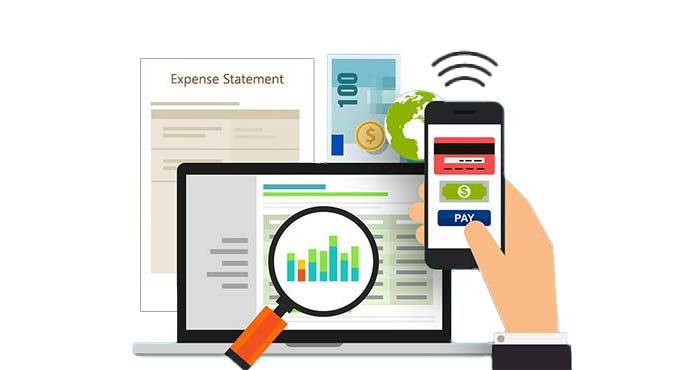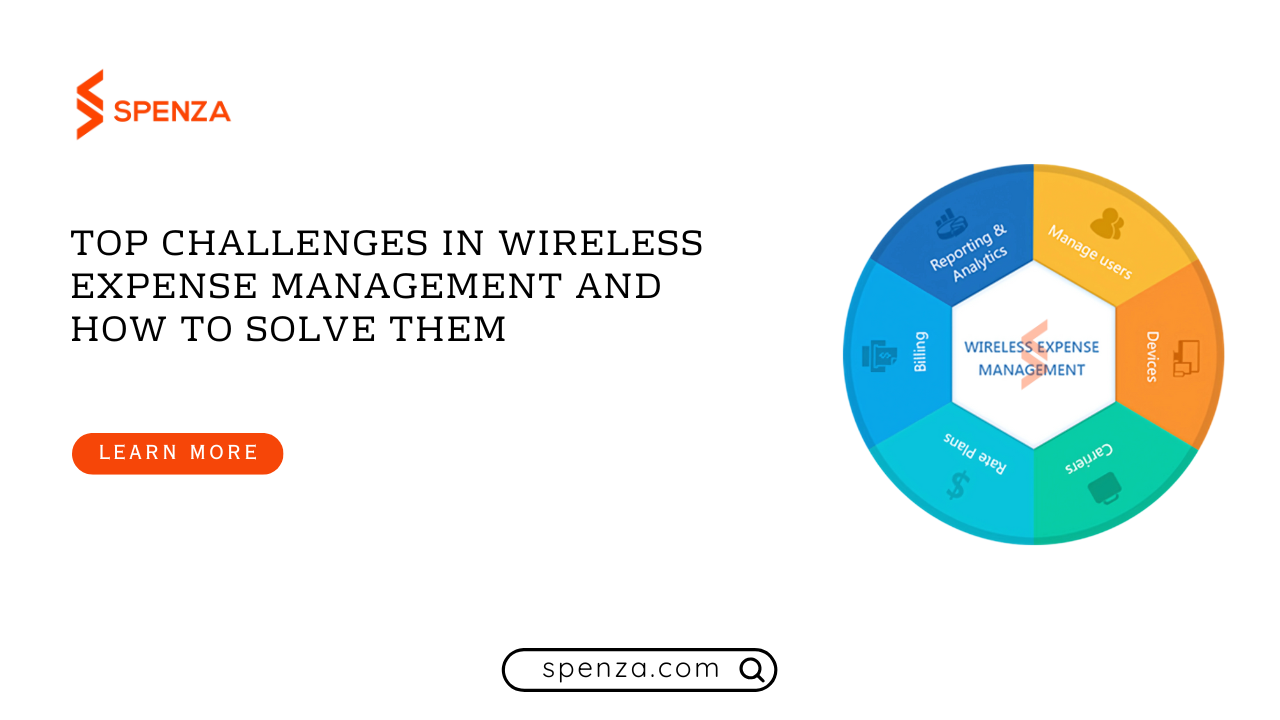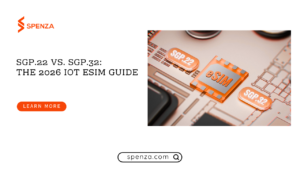In today’s hyper-connected world, businesses heavily rely on wireless technology to stay competitive and efficient. However, managing wireless expenses is a complex task that can lead to unnecessary costs and operational inefficiencies if not handled properly. Wireless Expense Management (WEM) is a critical component of Telecom Expense Management (TEM), focusing specifically on wireless devices and services. To optimize costs and enhance efficiency, it’s essential to address the challenges in WEM within the broader context of TEM.

Understanding Wireless Expense Management (WEM)
Wireless Expense Management (WEM) is the process of monitoring, analyzing, and controlling the costs associated with an organization’s wireless communications. This includes managing expenses for mobile devices such as smartphones, tablets, Internet of Things (IoT) devices, mobile plans, data usage, and other wireless connectivity services.
WEM as a Subset of Telecom Expense Management (TEM)
While WEM focuses specifically on wireless expenses, it is a critical component of the broader Telecom Expense Management (TEM) framework. TEM encompasses the management of all telecommunications costs, including both wireless and wireline (fixed) services such as traditional phone systems, internet services, and data networks. Integrating WEM within the overall TEM strategy enables businesses to:
- Cost Management: Align wireless and wireline expenses for better budgeting and cost optimization.
- Comprehensive Reporting: Gain a single, unified view of all telecom expenditures.
- Improved Resource Allocation: Optimize costs across various services and plans to match business needs.
Benefits of Implementing WEM
Implementing a robust WEM program offers several advantages:
- Enhanced Cost Control: Ensure that the organization only pays for active services and eliminates unnecessary expenses.
- Increased Visibility: Gain detailed insights into wireless spending patterns and usage behaviours.
- Efficient Resource Utilization: Identify and eliminate underutilized plans and redundant services.
- Better Decision-Making: Make informed choices about service providers, plans, and device procurement.
Challenges in Wireless Expense Management
Wireless Expense Management (WEM) is becoming increasingly critical for organizations, yet it presents several challenges. Here’s a closer look at the top difficulties faced by businesses.
1. Complex Billing and Usage Tracking
With the increase of mobile devices and services, billing structures have become increasingly complicated. Organizations often struggle with:
- Inaccurate Billing: Errors in invoices can lead to overpayments or understatements of expenses.
- Hidden Charges: Unexpected fees and surcharges can inflate costs.
- Usage Variability: Fluctuations in data and voice usage make it difficult to predict expenses.
- Time-Consuming: Manually auditing bills is labour-intensive and prone to mistakes.
2. Diverse Plans and Providers
The telecom market is saturated with multiple service providers offering a vast array of plans. This creates challenges such as:
- Overwhelming Options: Navigating through numerous plans to find the most cost-effective option is daunting.
- Frequent Changes: Providers regularly update pricing and promotions, making it hard to stay informed.
- Contract Complexities: Understanding the fine print in contracts can be challenging, leading to unfavourable terms.
- Vendor Management: Dealing with multiple vendors increases administrative workload.
3. Limited Visibility and Control
Without comprehensive tools, organizations may lack:
- Centralized Data: Information scattered across departments hinders effective management.
- Real-Time Insights: Delayed access to usage data impedes timely decision-making.
- Transparency: Difficulty in tracking who is using what services and at what cost.
- Budgeting Challenges: The inability to forecast expenses accurately affects financial planning.
4. Resource Optimization Challenges
Efficiently managing wireless resources is critical, yet businesses often face:
- Device Proliferation: Managing a growing number of devices increases complexity.
- Underutilized Assets: Paying for unused or underused services and devices wastes resources.
- Policy Enforcement: Ensuring employees comply with usage policies can be difficult.
- Lifecycle Management: Tracking devices from procurement to retirement requires robust processes.
5. Navigating Technological Changes (Like 5G)
Emerging technologies bring opportunities and challenges:
- Infrastructure Upgrades: Transitioning to technologies like 5G requires significant investment.
- Compatibility Issues: New technologies may not integrate seamlessly with existing systems.
- Training and Adaptation: Staff may need training to utilize new technologies effectively.
- Cost Management: Balancing the benefits of new technologies with the associated expenses is complex.
Solving WEM Challenges with Spenza’s Comprehensive TEM Solution
To address these challenges, businesses require a comprehensive approach to integrating WEM with a fully developed TEM system. Spenza offers the most innovative TEM solutions in telecom expense management, providing tools for optimizing wireless expenses.
1. Automated Billing Audits
Spenza’s TEM platform features automated billing audits that:
- Identify Errors: Quickly detect discrepancies between billed amounts and actual usage.
- Recover Costs: Facilitate disputes with providers to recover overcharges.
- Ensure Accuracy: Regular audits maintain billing integrity over time.
- Reduce Manual Effort: Automation minimizes the need for time-consuming manual reviews.
2. Integrated Marketplace for Plan Comparison
The platform includes an integrated marketplace that:
- Simplifies Comparison: Easily compare plans from different providers in one place.
- Customizes Recommendations: Suggests plans based on the organization’s specific usage patterns.
- Negotiates Better Rates: Leverage collective bargaining power for more favourable terms.
- Streamlines Procurement: Facilitates quick and efficient plan selection and implementation.
3. Comprehensive Reporting and Analytics
Spenza’s reporting tools offer:
- Real-Time Data: Access up-to-date information on usage and expenses.
- Customizable Dashboards: Tailor insights to the needs of different stakeholders.
- Trend Analysis: Identify patterns over time to inform strategic decisions.
- Alerts and Notifications: Set thresholds and receive alerts for unusual activity.
4. Centralized Inventory Management
The TEM solution provides:
- Unified Asset Tracking: Monitor all devices and services from a single platform.
- Lifecycle Management: Manage devices from acquisition to retirement.
- Policy Enforcement: Implement and monitor compliance with organizational policies.
- Synchronization with Providers: Ensure inventory data matches provider records, reducing discrepancies.
5. Support for Technological Transitions
Spenza assists with technology upgrades by:
- Assessment and Planning: Evaluate readiness for new technologies like 5G.
- Cost-Benefit Analysis: Understand the financial implications of technology adoption.
- Migration Support: Offer guidance and tools for a smooth transition.
- Ongoing Optimization: Continually assess and adjust to maximize ROI on new technologies.
How Butlr.io Benefited from Spenza’s TEM Solution

Butlr.io specializes in IoT-driven spatial intelligence and home automation. Its innovative approaches optimize smart building management, energy usage, and space occupancy across global markets.
Challenges Faced by Butlr.io
- High-bandwidth and Multi-country Connectivity: Butlr.io requires substantial bandwidth for real-time IoT sensor data processing across multiple countries (US, UK, France, etc.). Managing services across regions added complexity.
- Complex Global Connectivity Management: Without a centralized system, juggling different providers and plans led to inefficiencies and a lack of visibility.
- Expensive Unlimited Data Plans: For scalable IoT data needs, Butlr.io found unlimited data plans to be expensive and wasteful.
Spenza’s Solution for Butlr.io
Spenza assists with technology upgrades by:
- Assessment and Planning: Evaluate readiness for new technologies like 5G.
- Cost-Benefit Analysis: Understand the financial implications of technology adoption.
- Migration Support: Offer guidance and tools for a smooth transition.
- Ongoing Optimization: Continually assess and adjust to maximize ROI on new technologies.
Results Achieved by Butlr.io
- Cost Savings: Achieved significant reductions in data costs by eliminating wasteful unlimited plans.
- Operational Efficiency: Simplified management reduced the time and resources required to oversee mobile connectivity.
- Enhanced Visibility: Comprehensive reporting offered real-time insights into global telecom expenses.
- Scalability and Innovation: The TEM solution ensured that Butler.io’s global operations remained efficient and adaptable as new technologies emerged.
Benefits of Spenza’s Integrated TEM Solution
- Enhanced Cost Savings: Tools for plan comparison, usage tracking, and billing audits ensure businesses maximize savings, with clients often reducing wireless costs by up to 30%.
- Improved Operational Efficiency: Automating routine tasks, such as billing reconciliation and inventory tracking, helps free administrative resources to focus on higher-value tasks.
- Greater Visibility and Control: Comprehensive dashboards and insights provide real-time data for informed decision-making.
- Scalability and Flexibility: Spenza’s solutions are robust yet flexible, accommodating small businesses or massive enterprise networks with ease.
Conclusion
In today’s competitive business landscape, companies are constantly seeking ways to reduce costs while boosting productivity. Wireless Expense Management (WEM) plays a pivotal role in achieving these objectives. However, with the advent of advanced technologies like 5G, businesses face increased complexities in service plans, billing structures, and numerous other processes. Merging these new technological trends with existing systems can create significant challenges.
Integrating WEM into a comprehensive Telecom Expense Management (TEM) solution is essential to overcome these obstacles. Spenza’s all-encompassing TEM platform empowers organizations to gain full control over their telecom expenditures
FAQs
WEM involves monitoring and optimizing spending on mobile and wireless services to ensure businesses only pay for what they need.
WEM reduces unnecessary costs, improves visibility into expenditures, and enhances resource utilization, leading to better budgeting and efficiency.
Spenza offers automated billing audits, real-time usage tracking, detailed reporting, and an integrated marketplace, helping organizations identify discrepancies and optimize spending across all telecom services.
Spenza’s platform stands out due to its comprehensive approach, integrating WEM within TEM, along with features like automated processes, multi-operator support, and in-depth analytics, simplifying decision-making and enhancing cost control.
Yes, Spenza provides tailored support to manage costs and infrastructure changes associated with adopting new technologies such as 5G.
To learn more about how Spenza can transform your wireless expense management strategy, schedule a free call today.






